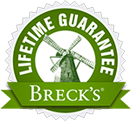Honey bees had been buzzing around the world, peacefully, keeping busy at their business for millions of years until just a decade ago, when they unexpectedly started dying out in large numbers. Bee populations across the globe have been plummeting ever since, with scientists still struggling to ascertain the exact reason behind the mysterious phenomenon. Now it’s understandably beyond a regular gardener to come up with a final solution, but we can all contribute by creating bee-friendly gardens.
Grow bee-friendly plants
Clusters of colorful, bee-friendly plants growing in a sunny spot- barring its hive, there’s nowhere else a bee would rather be! monarda, crocus, early snow glories, Grecian windflowers and alliums are some of the bees’ favorites. Try and incorporate different flower varieties so you’ll have blooms in multiple seasons and bees will have a continuous food supply. Here’s a simple example- crocus, lilac and hyacinth for spring blooms, bee balm and hosta for summer blooms, sedum and asters for fall blooms. When it comes to plants that attract bees, there’s plenty of variety. Look beyond flowering plants, you can opt for blackberries, raspberries and a number of bee friendly trees. Try and make room for some native flowers, herbs and pick single flower tops over double headed flowers for while the double headed flowers might look more flamboyant, they usually produce lesser quantities of nectar.
Avoid chemical fertilizers and pesticides
Feeding on pollen contaminated by chemical fertilizers and pesticides could well be the biggest reasons behind the drop in bee population. So when you’re gardening for bees, it’s imperative you keep clear of chemical fertilizers and pesticides and opt for natural fertilizers, natural disease and pest control solutions.



